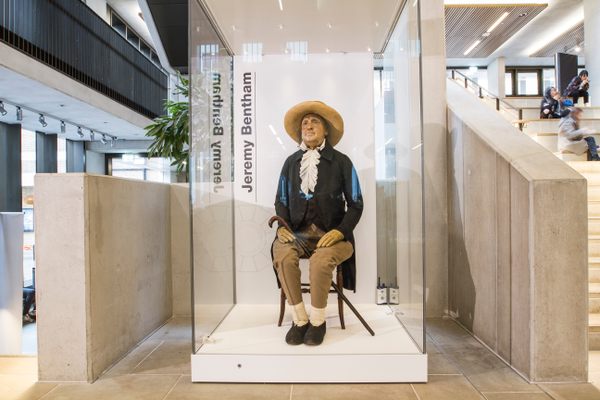A Moscow University Has Erected a Monument to Peer Review
Rejection is just one possible outcome.
Anonymous peer review is a cornerstone of the modern academic world—a way to double-check and evaluate scholarly work before it is made public. It can also be a soul-crushing wake-up call when things don’t go so well. Love it or hate it, the time-tested process was recently immortalized in a stone monument outside of Moscow’s Higher School of Economics (HSE).
For those outside academia, peer review is a process in which scholars who wish to publish their works in journals first must have them formally reviewed by other experts, who anonymously comment on whether the work is sound and worthy, could stand to be improved, or should be rejected outright. It provides necessary perspective, but can also seem clinically unfeeling and, to the rejected, somewhat arbitrary. So, according to a story in Nature, when the HSE was trying to determine what to do with a giant block of concrete outside their institution, they decided to honor the process.
The recently unveiled monument is a huge stone die, the brainchild of sociologist Igor Chirikov, with common outcomes of peer review etched (in English) onto the five visible sides: “Accept,” “Minor Changes,” “Major Changes,” “Revise and Resubmit,” and the dreaded “Reject.” Surrounding the outcomes are the titles of academic papers, many of which were authored by people who donated to the project.
The monument is meant to honor the rarely acknowledged efforts of the anonymous reviewers. It is also a nice reminder that in any creative, scientific, or academic endeavor, rejection is just one side of the die.




















Follow us on Twitter to get the latest on the world's hidden wonders.
Like us on Facebook to get the latest on the world's hidden wonders.
Follow us on Twitter Like us on Facebook